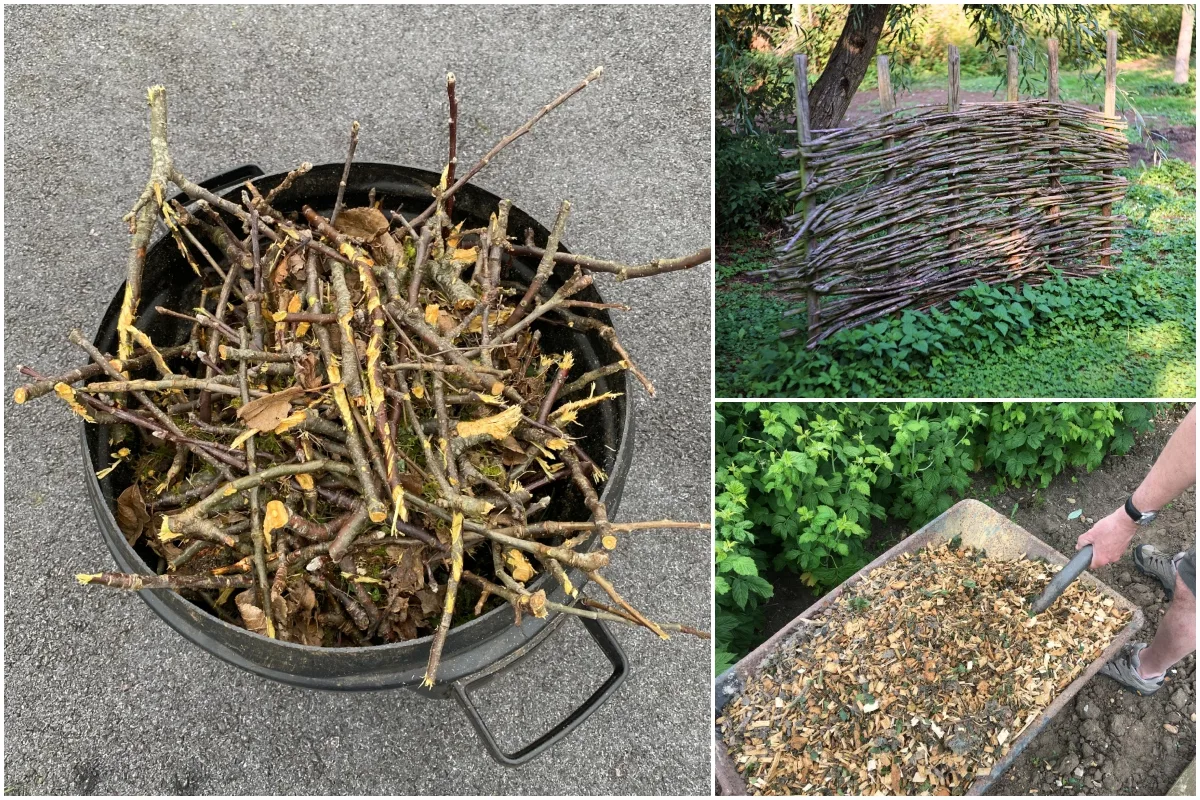
If you want a bounty of juicy ripe fruit every year, then annual pruning and maintenance of your fruit trees is a must – especially in winter.
But once the job is done, you’re left with a giant pile of twigs, branches and sometimes larger limbs.
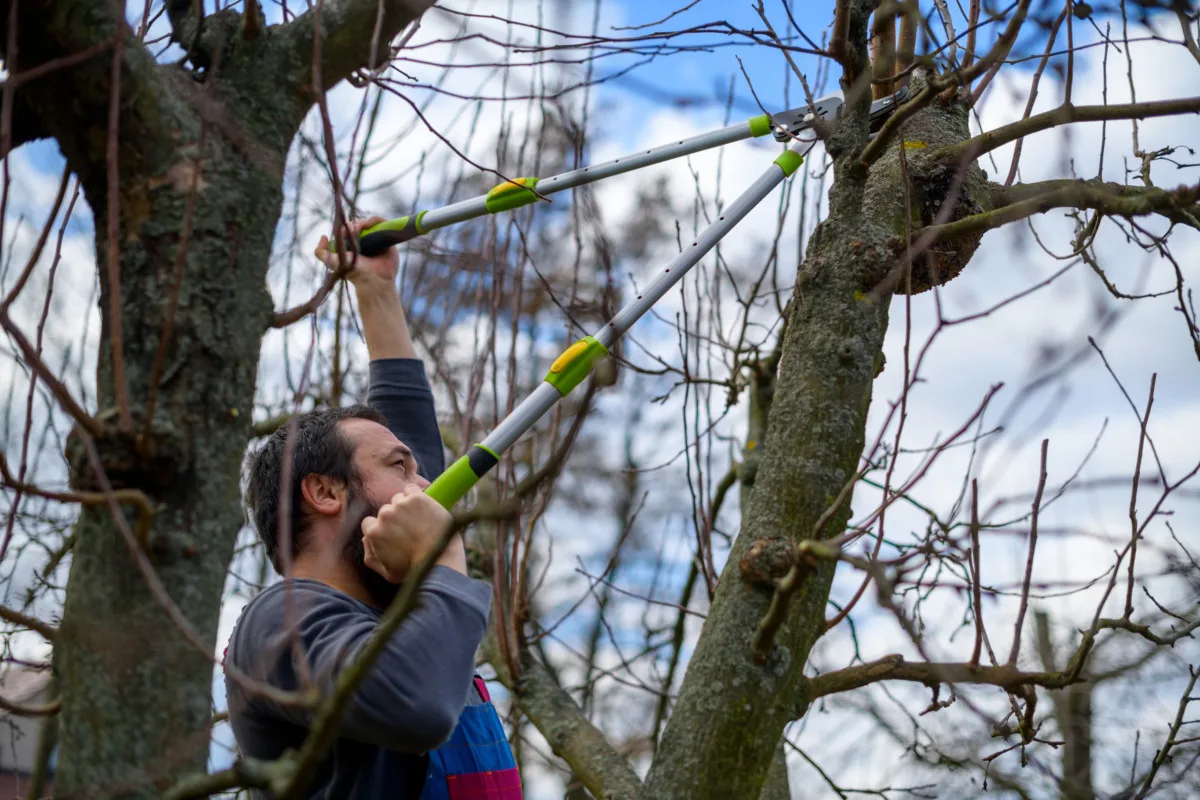
Most folks dispose of the cuttings in one way or another. If you hire someone to do the pruning, clean-up is usually part of the package. But whether you’re the arborist or someone else is, you might want to hang onto all that fruitwood.
We’ve got some excellent ways for you to put those prunings or trimmings to good use.
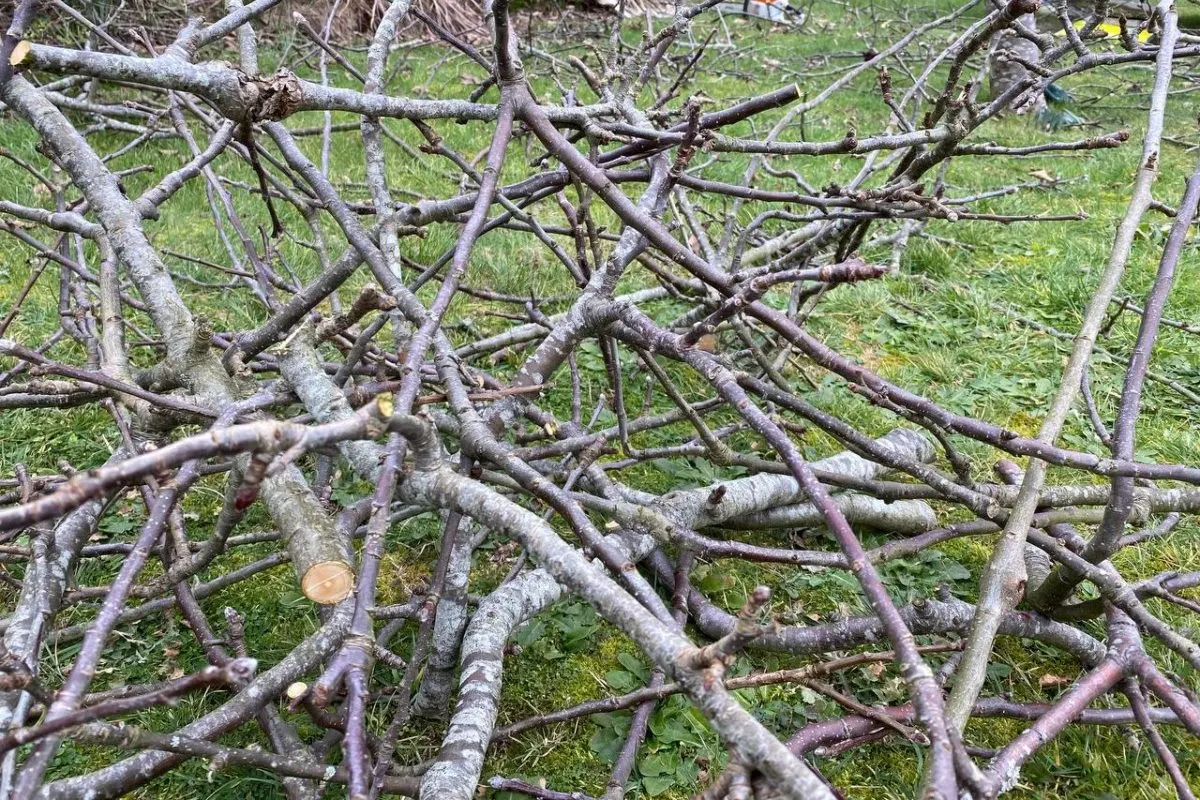
There are a few good reasons for keeping fruit tree trimmings.
It might be more convenient to let someone else do the clean-up or to put all that waste on the curb, but there are a couple of good reasons not to.
Many tree care companies will give you a discount if you handle the clean-up yourself. Saving a little money is always a good thing.
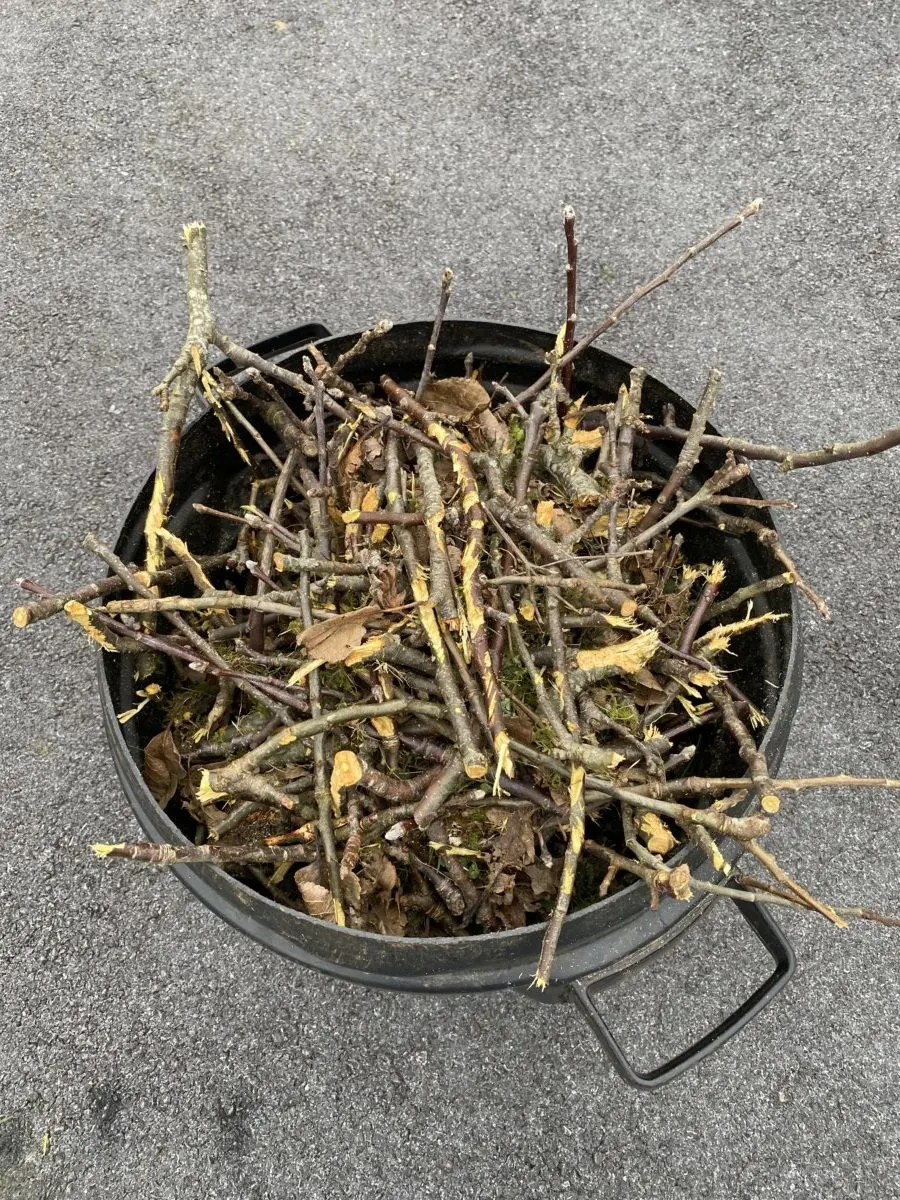
By using the twigs, branches and limbs you’ve pruned instead of sending them to the landfill, you’re helping to slow and prevent climate change.
According to the U.S. Environmental Protection Agency, a quarter of the solid waste that ends up in landfills is lawn trimmings and food waste. As this green waste breaks down, it releases methane (a greenhouse gas even more potent than CO2) into the atmosphere, where it traps in heat.
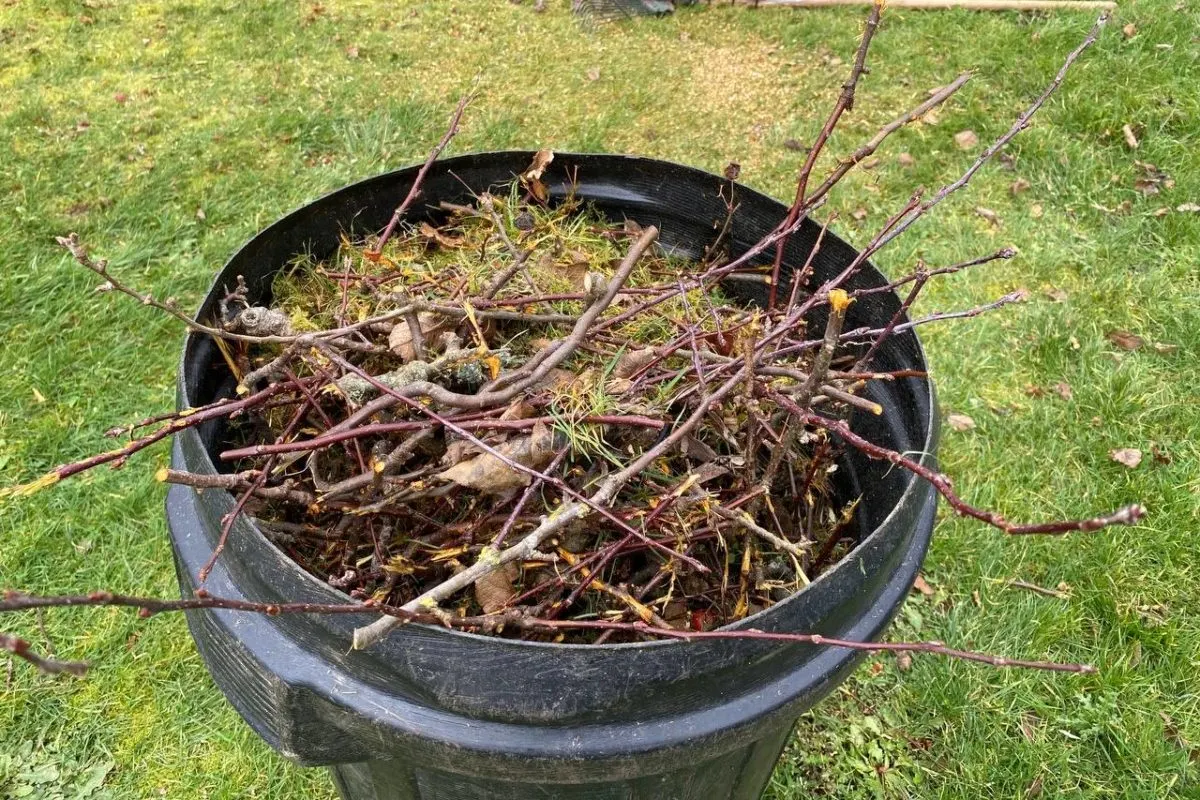
Instead, here are seven ways to use up your fruit tree trimmings.
1. Make a Wattle Fence
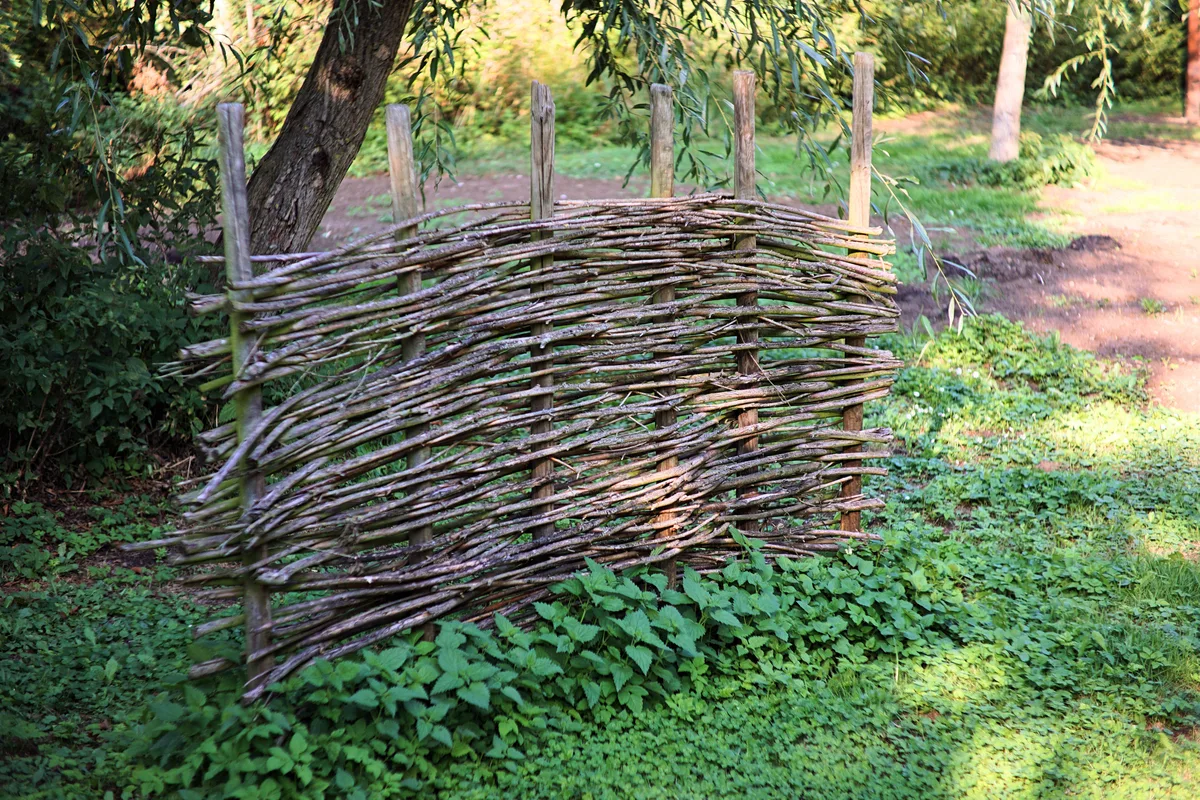
Fencing can be incredibly expensive, and many of the materials used to make fencing aren’t great for the environment. Why not build your own rustic wattle fence? We show you how here.
Larger limbs can be used for the main supports, and all those branches you’ve pruned are excellent for weaving the actual fence.
One of the benefits of using this type of fencing is that you can create a very dense fence perfect for privacy, or you can create something airier to allow plants to grow through or have good airflow. Wattle fencing is highly customizable to your needs.
2. DIY Garden Supports – Build a Trellis, Bean Pole or Row Cover Frame
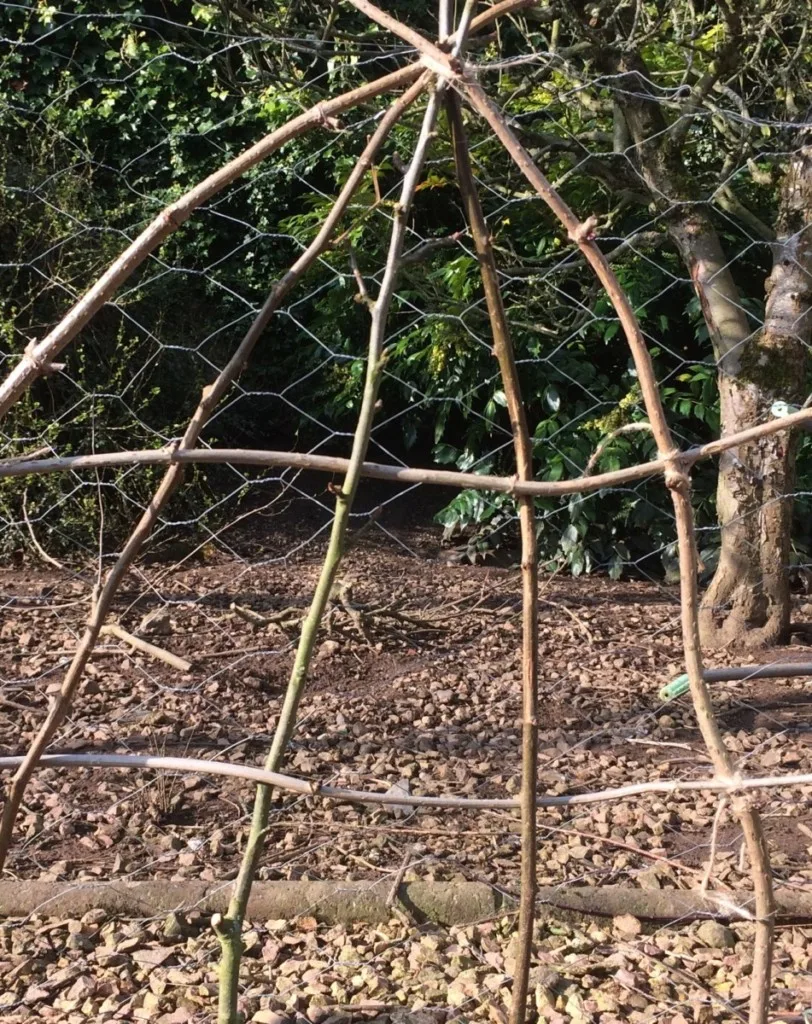
Longer branches pruned from fruit trees are perfect for use in and around the garden. They’re usually quite bendy, making it easy to shape them to suit your project. Whether you need a rustic trellis for climbing plants or some row cover supports, the supple branches of fruit trees are perfect.
I also love the look of using these natural materials in the garden. Nothing gives a more rustic cottage garden feel than seeing pea tendrils climbing up a branch instead of a wire support.
3. Enjoy a Pleasant-Smelling Fire

My dad always had a pile of smaller logs set aside next to the main stack of firewood. These were the limbs cut from the apple trees. He would toss one on the fire now and then, and the whole cabin would smell good.
If you’ve got a fireplace or an outdoor firepit, save and use the twigs, branches and limbs to burn. The smaller stuff is excellent kindling once it’s dried, and the limbs can be cut into firewood. Set it aside from your normal stuff and add a log now and then to enjoy an especially lovely scented fire.
4. Up Your Barbecue Game
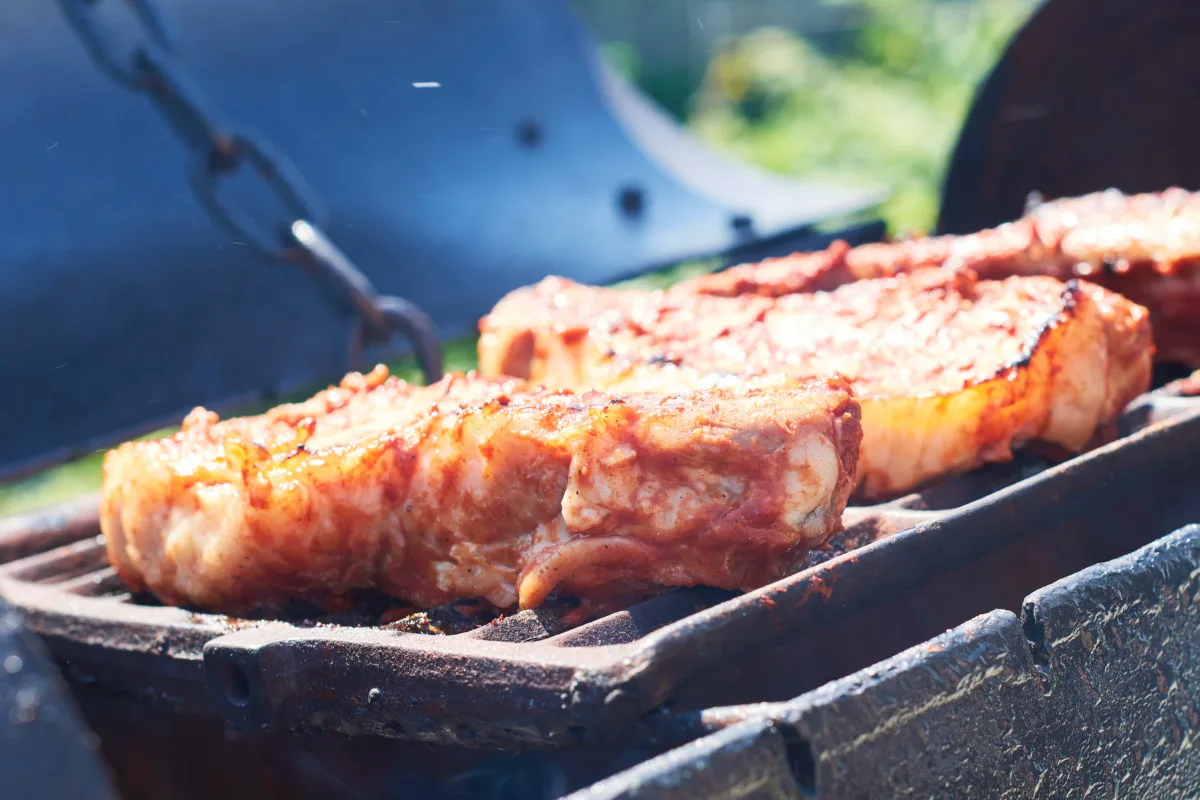
Most guys I know get a little weird about cooking meat outdoors. There’s something about the sound of charcoal briquettes being poured into a grill and the sizzle of meat that makes them lose their minds. They get oddly competitive.
If you want to up your grilling game, save all that marvelous fruitwood for grilling and smoking. Applewood, in particular, does amazing things to meat when you cook with it.
Save and season your wood, soaking it in water for about a half hour before grilling it. The soak will make the seasoned wood smoke for a bit, infusing your meat with wonderful flavor.
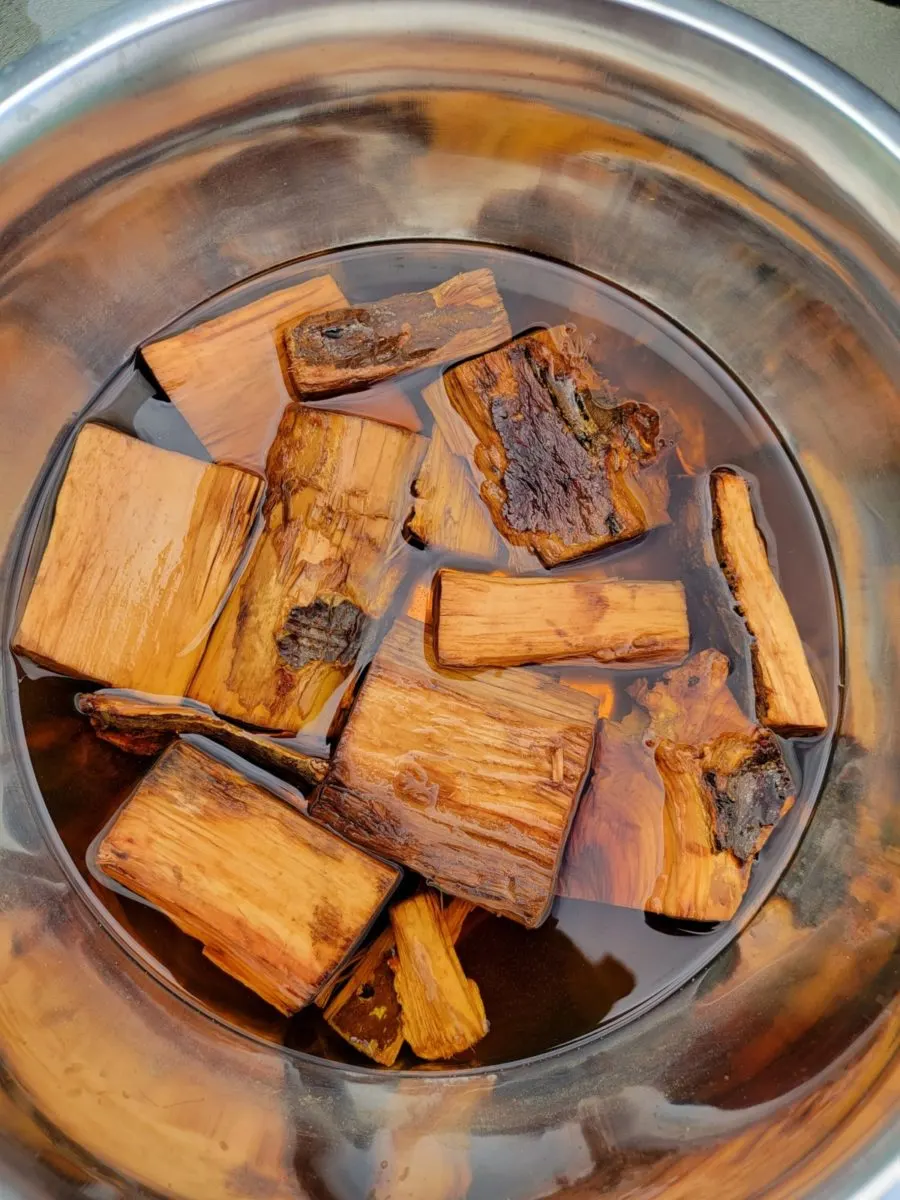
Here’s a tutorial for making your own applewood chips for smoking.
5. Build Your Chickens a Fancy Roost
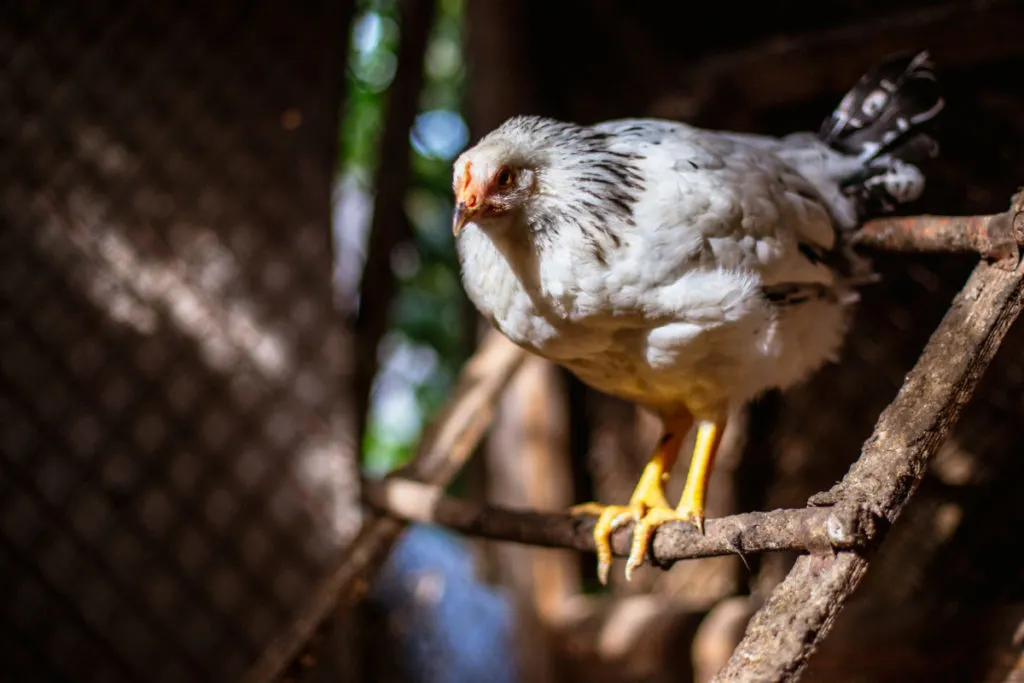
Having a backyard flock can get expensive pretty quickly if you’re not careful. But it doesn’t have to be; you can raise chickens on a dime. One way to help manage costs is using materials you already have to build what your birds need.
Making your own chicken roost using branches and limbs from fruit tree cuttings is easy enough for anyone to do. Meredith created this super easy tutorial to show you how to make a chicken roost out of tree branches.
Your hens will thank you!
6. Help Fill a New Raised Bed
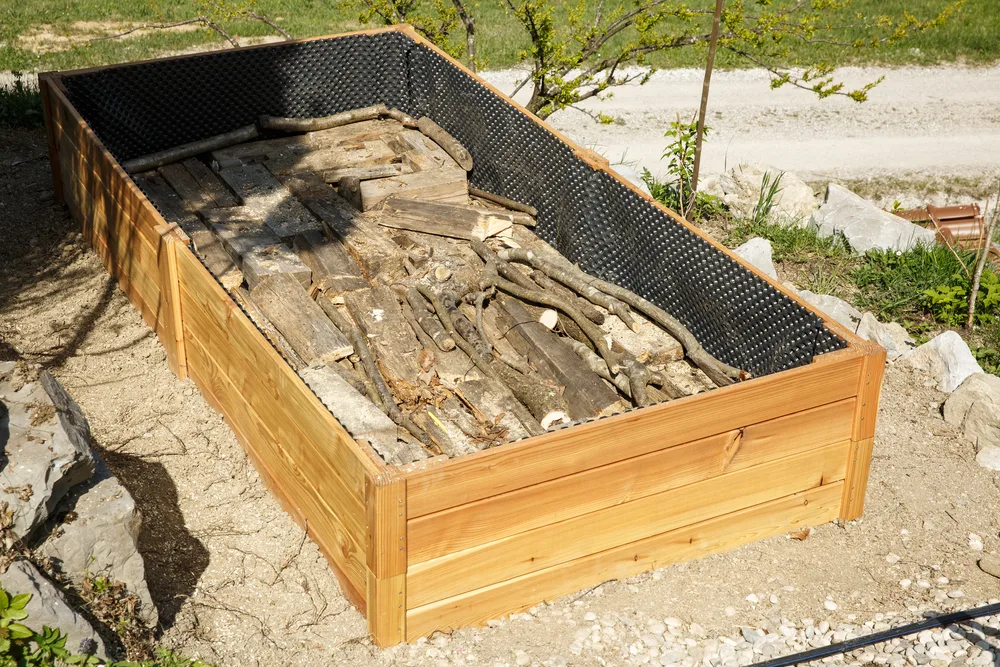
If you plan on building new raised beds, don’t get rid of that pile of branches and limbs. As anyone who has ever built deep raised beds will tell you, filling them can be expensive.
You can help cut the cost and improve the soil over time by putting your fruit tree trimmings in the bottom and then adding soil. The wood will break down over time, adding nutrients back into the soil.
All you need to do is cut the larger limbs into smaller pieces and the branches into more manageable sizes and layer them at the bottom of the bed. Now it’s ready to be filled with the perfect blend of soil.
Similarly, you can use your fruit tree trimmings to start a new Hugelkultur raised bed.
7. Chip for Mulch
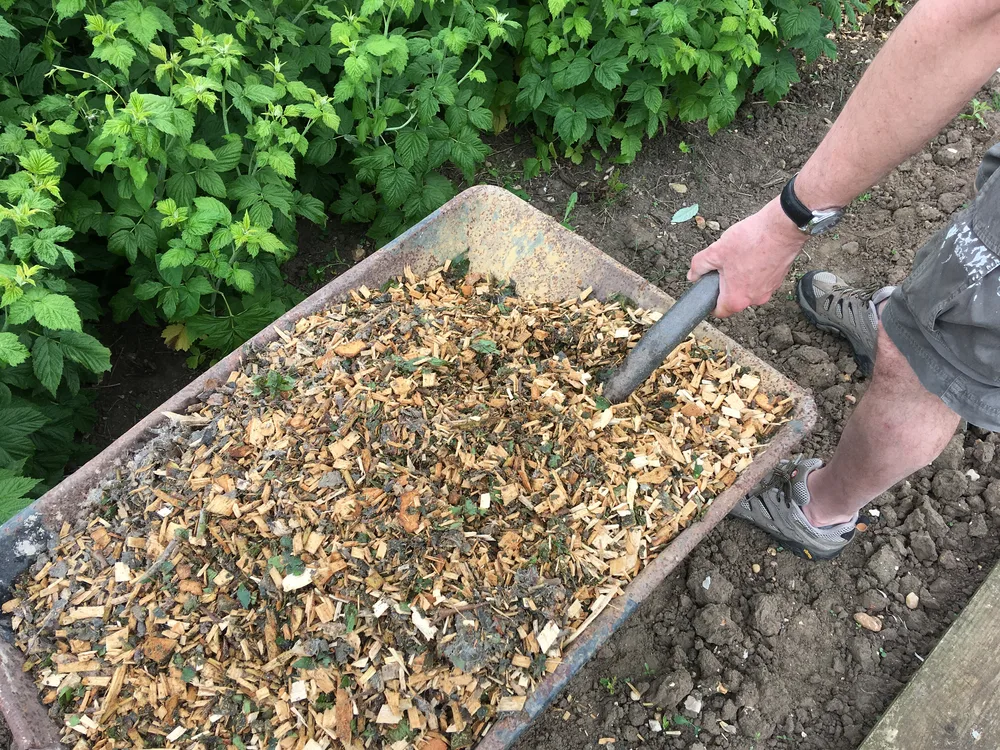
One of the easiest ways to repurpose fruit tree trimmings is to chip them into mulch. Mulching your garden is essential to locking in moisture, preventing soil erosion and keeping weeds at bay. Finding and using readily available materials to mulch with is always the way to go.
A small but inexpensive garden chipper is worth the investment and will pay for itself after a couple of years.
If you’ve hired a tree care company, ask them to chip the debris and leave it rather than raking it up. You may even be able to get extra mulch for free this way. Some tree care companies will happily empty their truck in your yard while working at your home.
Using the resulting debris from your annual fruit tree pruning around your home and garden is not only practical but good for the environment and good for your wallet.

Get the famous Rural Sprout newsletter delivered to your inbox.
Including Sunday musings from our editor, Tracey, as well as “What’s Up Wednesday” our roundup of what’s in season and new article updates and alerts.

